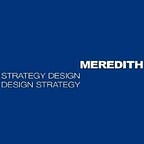Why do we keep talking about the open office this way?
The quality and character of the workplace remains a huge subject decades after walls began to come down and as the office eventually became more social and interactive.
A recent article in the Washington Post blasted out one more frustrated perspective on the open office. The more than 750 comments that followed illustrated that the workplace is not, or ought not to be, one thing. Nor is a single person’s perspective on the work of the organization and personal workspace something that can be considered complete.
When we start a project to design a new workspace, we immerse ourselves as much as is practical into the people and work of the organization. We make observations, analyze space, sometimes conduct surveys, and always do as many interviews as we can.
Interviews are always illuminating, bringing to the surface opinions we expect to hear (everybody assumes we are there to take away their offices) as well as some surprising insights into culture, work, operations, flows, productivity and other organizational performance matters that people tie strongly to the planning and design of the workplace.
That is, we find that the workplace many times matters more than the organizational structures that manage the workforce.
Here’s a good example of what we uncover. In a recent round of interviews with a client’s staff, we spoke to one of the company’s key engineers. He leads their most advanced and competitively differentiating work. It was important to the company that he should be able to concentrate on the subjects that made him so valuable. He made a very good case for being placed out of the mainstream and shrouded with walls.
His statement about his value was not merely ego. His colleagues agreed that he was, indeed, a very important part of the company. What was illuminating in our interviews with those others who affirmed his value was their testament to how valuable he was to them. He had experience, expertise, and creative insights that, when he was engaged with them, increased the value of their work. When he was not available, their productivity and their value to the company declined. His colleagues’ interest in interactions with him was important to them but those essential interactions became classical workplace “distractions” to him.
So now, what do we do? Walled off, and with a moat around him, he is individually productive. Without a bridge, however, everybody else’s productivity, engagement, and satisfaction drops, and the cost of their work goes up.
This, of course, is a management issue, and a cultural issue, but is also a workspace design issue.
The author of the Washington Post piece, beyond shopping for a bright blue noise-cancelling headset to signal focus and reduce distraction, began to scratch the surface of better workplace design with some of her observations.
She notes the importance of protocols in the open portions of the office. (We think visible leadership modeling is more effective.) She notes the expansion of relationships that emerge from the interactions of the open office. (As we found when the CEO of a client organization asked to sit in the open office, placing high value on exposure to those interactions.) She notes the value of meeting rooms for focused work. (We think it would be even better if they were designed for their real use, as retreats for individuals at those times when they need to concentrate.)
She now might come to the insight Google did not “get it wrong” and that the open office is not “destroying the workplace.” She will find that the matter is not closed or open, is not office or cube, is not bullpen or conference room. What we call “the office” needs a new language of form, one that allows us to creatively design the right spaces for the many different activities and work styles we engage in.
Organizations with a new workspace design project might start with thoughtful consideration of the purpose of the company and how it builds its value. They might make careful observation of the interactions people have, to understand what brought them into the open office to work together instead of working alone at home or in Starbucks. And they might begin with some interviews to understand how the variety of people and the range of work styles may need a more nuanced response, one that offers more than a binary choice.
The spaces and settings of the workplace that emerge from that critical thinking will support the culture of the organization, assure the effective flow of information, and influence the performance and satisfaction of its people.
Thank you very much for reading. I’d be happy to have your like or comments below.
This was first published on the blog of MEREDITH Strategy + Design here
